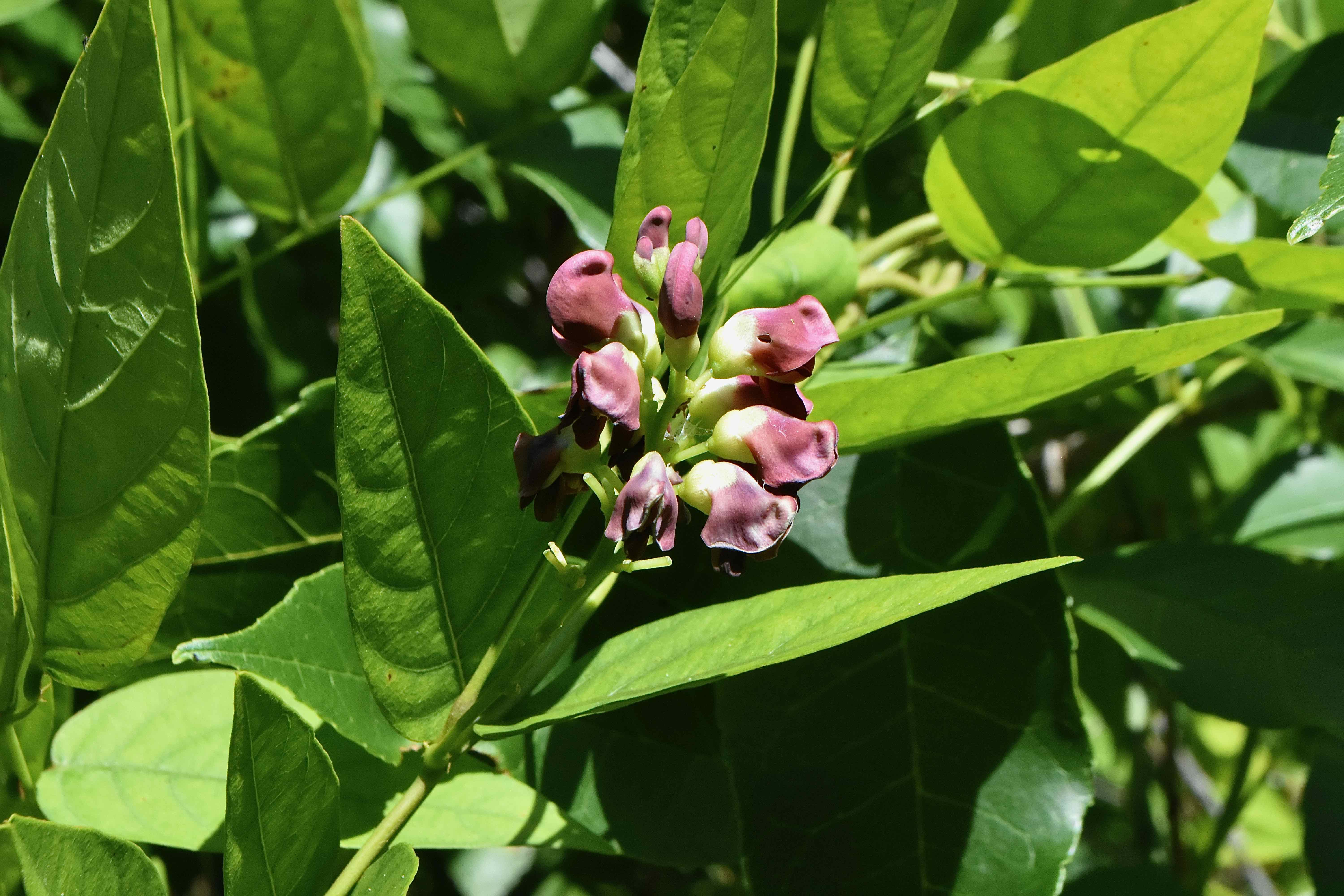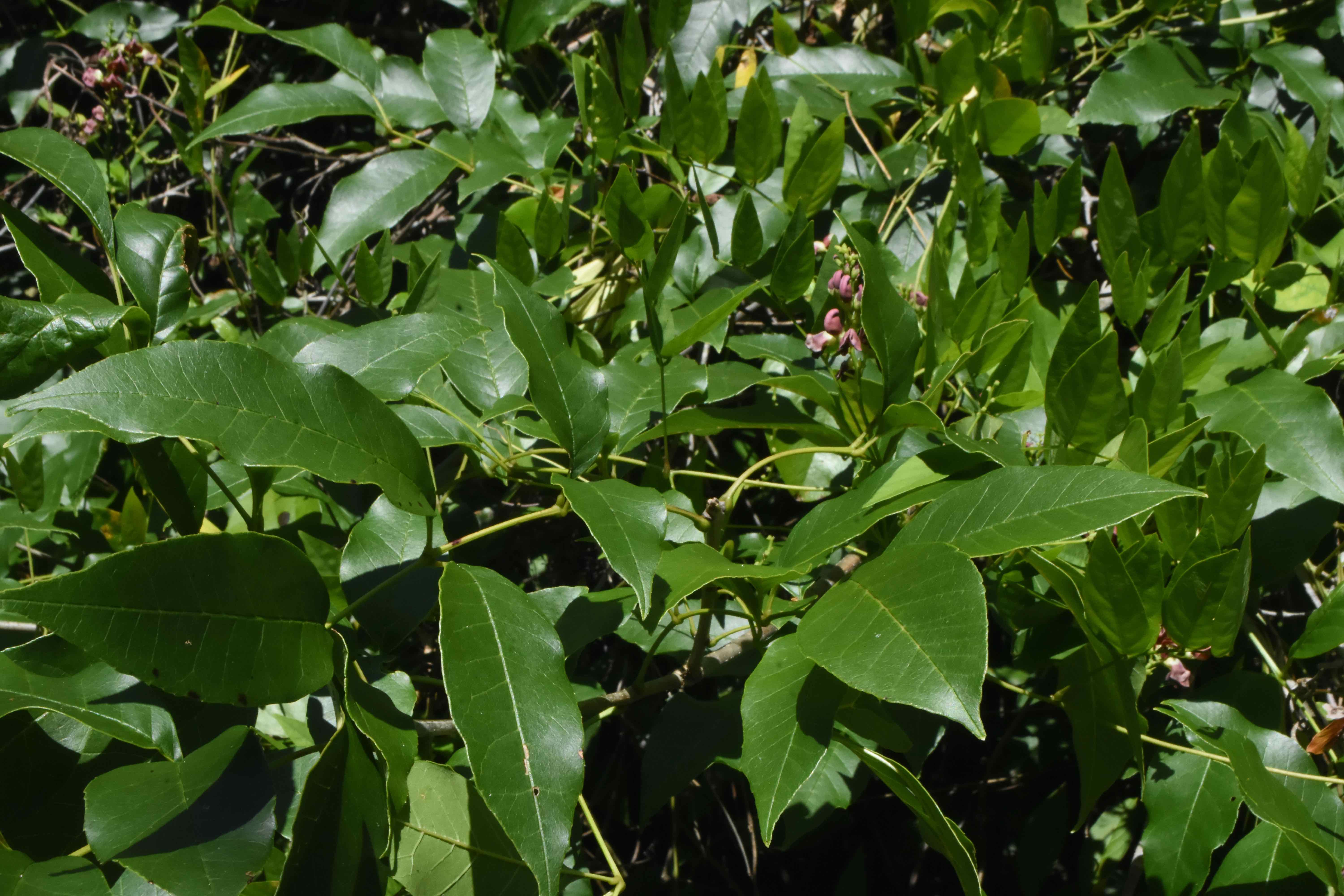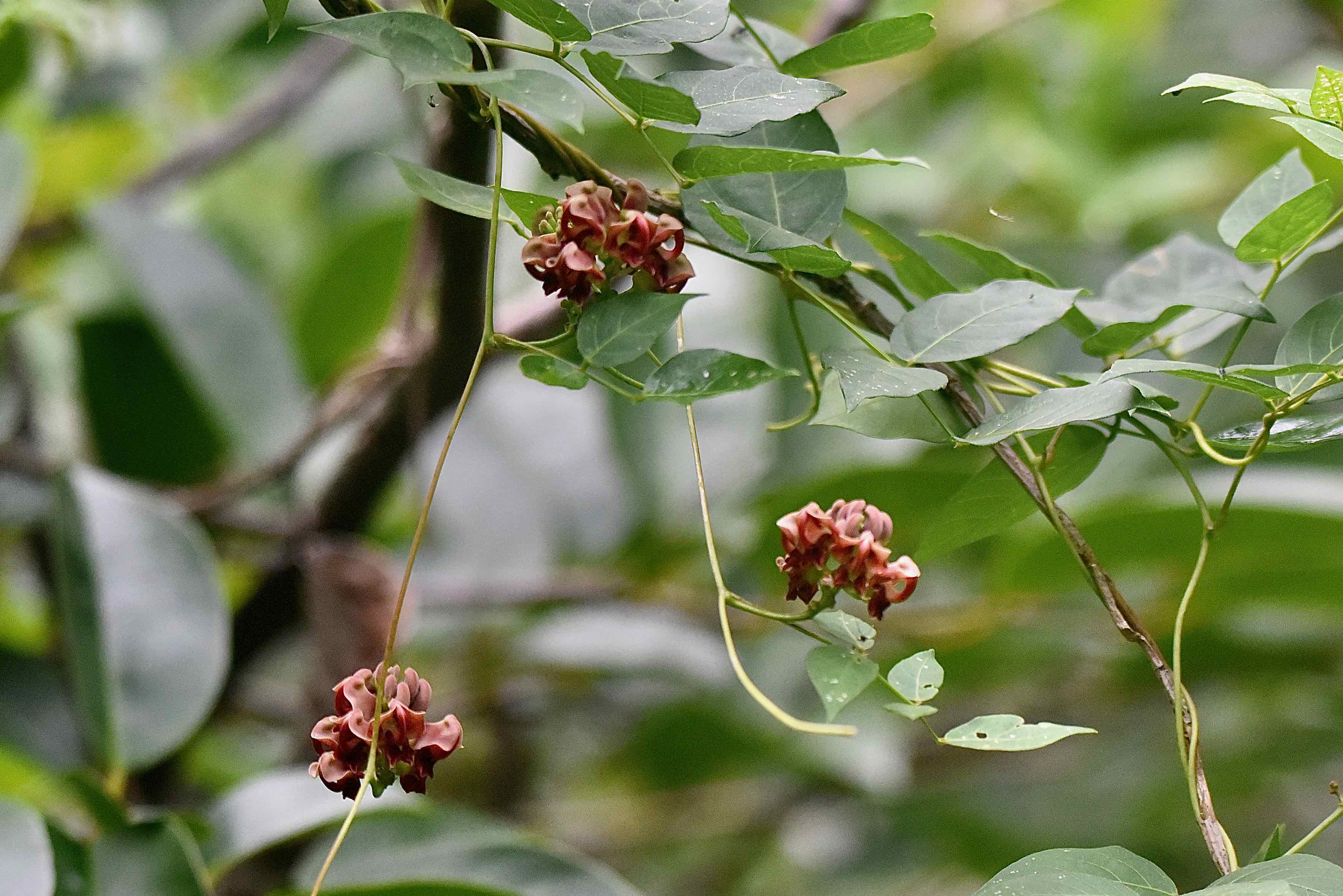
Groundnut, photographed at Fakahatchee Strand State Preserve, Copeland, Collier County, in May 2022.
Think of a plant in the pea family called groundnut and you might imagine something along the lines of the peanut, which buries its nutlike seed pod in the ground. Ground nut.
The plant that goes by the name groundnut, Apios americana, does produce a seedpod, but it hangs on the plant just like pea pods generally do. The namesake “ground nut” is actually a potato-like tuber, which, once upon a time, was an important source of food for both Native Americans and European colonists.
Groundnut is a Florida native found throughout the Panhandle and the Peninsula, including all but one South Florida county, Monroe. It’s considered rare in our end of the state, according to the Institute for Regional Conservation in Delray Beach, but it is more common elsewhere.
Its range extends from Maine to the Dakotas, Colorado and Texas, and eastward to Florida. It’s also found in eastern Canada.
Groundnut tends to like moist habitats — wet hammocks, floodplains, alongside lakes and streams and disturbed areas.
As noted above, groundnut is a member of Fabaceae, the pea family and has the usual pea-like characteristics. It’s a twining vine that can reach 10 to 15 feet long or more; the leaves are small, compound and entire (no teeth or lobes along the outer edges) with five to seven lance-shaped to egg-shaped leaflets arranged alternately along the stem.
The flowers appear in densely packed, ball-like clusters called racemes that grow from the axils, the point where a leaf meets the stem.
They are a pale pink on the outside, red to purple on the inside. Each flower has a round upper petal, two side “wings” facing downward and two petals fused together to form a sickle-shaped structure. The anthers — the male parts of the flower — are like loaded springs; when an insect of a certain weight — usually a bee — lands on the flower, the anthers spring forth, dusting the visitor with pollen.
Bloom time is July through October up north, earlier here in South Florida. The flowers give way to green pods each of which is two to three inches long. They’ll turn brown as they ripen, and eventually split open and scatter the pea-sized seeds.
A number of bee species pollinate groundnut. It is a host plant for the caterpillars of the silver spotted skipper butterfly.
But groundnut’s most prominent feature takes a little digging to find — it’s potato-like roots. The tubers aren’t large, no more than two or three inches long and egg-shaped, but they are packed with carbohydrates and, more importantly, protein. Groundnut’s tubers have three times the protein of a potato.
One of the standard references we use in our research is the Native American Ethnobotany website, which lists what tribes used particular plants and how they were used. It lists 14 tribes that used groundnut for food. Among them: the Seminoles. We’re hardly experts on the subject, but that’s among the most we can recall seeing for any plant.
Groundnut’s tubers were used just like potatoes — roasted, boiled or fried. They were also dried and ground into a flour.
According to the U.S. Department of Agriculture, European colonists so prized the tubers that In New England, when they learned that Native Americans were harvesting groundnut, they passed laws prohibiting them from digging within town limits.
Groundnut is cultivated both for its tubers and the beauty of its flowers. It’s an easy but problematic plant to grow, especially in small spaces. The thing is, it can become weedy once it becomes established, and once it becomes established, it can be a difficult plant to control or get rid of because of all the tubers it produces. On the other hand, groundnut is grown commercially in Japan for the culinary value of the tubers — they’re that tasty.
Groundnut is not drought or salt tolerant.
Among the host of alternate common names for groundnut: American potato bean, Dakota peas, sea vines, pea vines, wild bean, ground bean, Indian potato, Potato bean, wild potato and wild sweet potato. Again, it’s a member of Fabaceae, the pea family.



